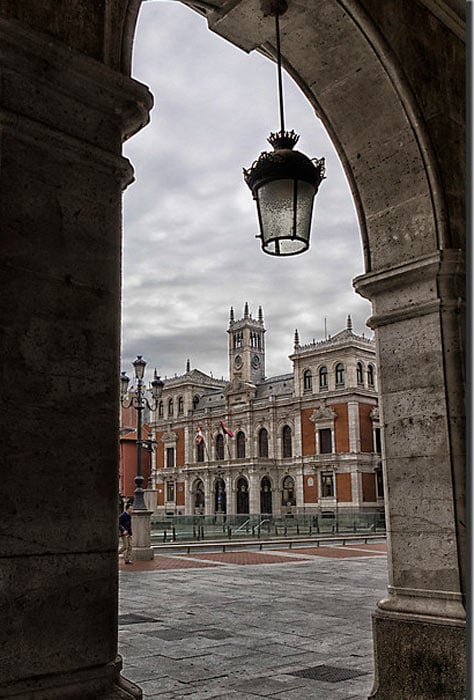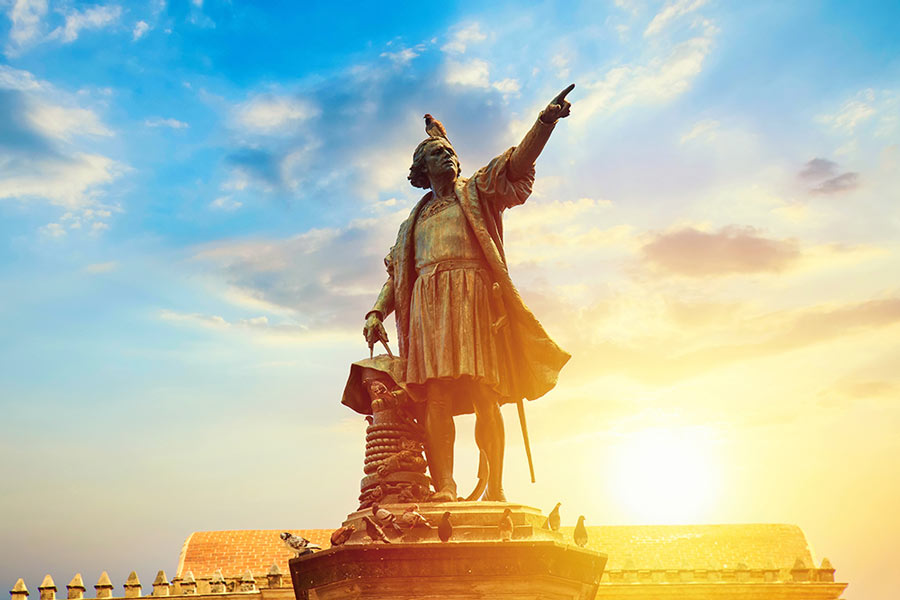First Tomb of Christopher Columbus Finally Found
He can be hailed as the heroic explorer who “discovered” the “New World” or reviled as the man who set off the process of genocide of indigenous Americans, but he can’t be denied a momentous place in history. Despite this, until now, the exact location of the tomb where Christopher Columbus, the 15th-century Italian explorer who unwittingly landed in the Bahamas while trying to find a westward sea route to the Indies, was first buried after his death in 1506 has long been a mystery. In a study coordinated by Spain’s Naval Museum, researchers have now pinpointed the exact location of his first tomb in Valladolid in Spain, reports the Daily Sabah.

The tomb of Christopher Columbus in Seville, Spain. (rabbit75_fot / Adobe Stock)
As in Life, So in Death: Following the Skeletal Remains of Christopher Columbus
In his 55 years of life, Columbus led four voyages to the Americas alone, from 1492 to 93, 1493 to 96, 1498 to 1500, and 1502 to 1504, sponsored by Ferdinand II and Isabella I, the Catholic monarchs of Spain. Prior to that, in preparation as it were for his transatlantic expeditions, he had sailed to Iceland and Ireland with the Portuguese merchant marine; landed up in Madeira to buy sugar as an agent for a Genoese firm; traded along the Guinea and Gold coasts of west Africa; and travelled at least once to the Portuguese fortress of São Jorge da Mina, in modern-day Ghana, learning about Portuguese navigation and the Atlantic wind systems along the way! So a certain degree of restlessness would seem to characterize the life of this 15th-century adventurer.
- Columbus’s Identity Crisis and the Ongoing Spread of False Columbus News
- Christopher Columbus: Master Double Agent and Portugal’s 007
In death, and he died a disappointed man, his remains too knew no rest. First buried in Valladolid in northwest Spain after his death there in 1506, his remains were exhumed three years later and transported to the city of Seville in southern Spain to be buried in the family mausoleum. Columbus was then moved several times over the following centuries before finally returning to rest in Seville, reports the Express.

Santo Domingo in the Dominican Republic also claims to be home to the remains of Christopher Columbus. (Mariordo / CC BY-SA 4.0)
In 1544, acting on the instructions he had left behind, his skeletal remains were taken to Santo Domingo, the capital of the Dominican Republic. Thereafter in 1795, his bones travelled to Havana before finally being brought back across the Atlantic to Seville in 1898 and laid to rest there.
However, this didn’t put to rest the controversy surrounding his final resting place, with the Dominican Republic continuing to claim Columbus is buried at an ornate lighthouse in Santo Domingo. In 2005, researchers from the University of Granada took DNA samples from bone slivers to confirm that it was in fact Columbus's bones that were buried in the Seville tomb. However, according to the Local, they did not rule out the possibility of the Santo Domingo tomb also holding a portion of his remains.

The first tomb of Columbus is now known to have been located near the Plaza Mayor in Valladolid. (Lorenmart / CC BY-NC 2.0)
Valladolid Was First Resting Place of Columbus’s Remains
Historians have long known that Columbus’s first and brief resting place for three years after his death in 1506 was Valladolid in northwest Spain. But its precise location was not known. In a statement, Spain’s Naval Museum said, according to the Daily Sabah, that the team of researchers had finally determined that Christopher Columbus was first buried in the San Francisco convent in Valladolid, which no longer exists. In its place a commercial zone has now come up near the Plaza Mayor, a broad, pedestrianized expanse surrounded by arcaded buildings painted red.
- End of the Enigmatic Christopher Columbus: A Man at Last Emerges to Eradicate the Myth
- How Columbus, Of All People, Became a National Symbol
The researchers arrived at this conclusion following “a detailed historical investigation, confirmed by ground-penetrating radars,” explained Local, quoting from the Naval Museum statement. Researchers took samples of lead, brick and gold from the Seville grave to find the match with the burial spot in Valladolid. According to the Express, Marcial Castro, who led the research, explained that he “was tasked with identifying the location where Columbus was buried from these threads of gold, silver, nails, lead, brick and to my surprise we got it.”
Fascinatingly, the chapel that housed the remains has since been recreated in 3D by historians and archaeologists. This latest research has fitted a missing piece into our knowledge of the man who, like him or hate him, undeniably played a significant role in changing the course of the world’s history.
Top image: Christopher Columbus statue in Santo Domingo, Dominican Republic. Source: Nikolay N. Antonov / Adobe Stock
By Sahir Pandey


















Comments
I’m surprised the wokies haven’t defiled it by now
What I find interesting is why do so many people have the need to disrespect the wishes of the deceased as to where and how they desired to be laid to rest?